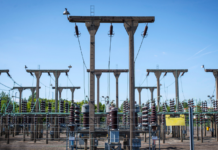The recent stock market rally is eerily echoing the performances of the past. The fact that the market has increased more than three folds in less than 3 years is something to be marvelled at. The reasons behind the increase can long be debated and talked about. Whether it was the falling interest rates, the stable currency or the fact that the market had stayed undervalued for so long. The final conclusion could be that it was a mix of all these factors coming together.
The catch is that this is not the first time such a rally has been seen.
While the market reaches new highs, there is a sense of certainty and security that is seen in the market. The older players of the market feel that the crisis and market crashes of yesteryear have helped the system build guard rails for itself. With the help of National Clearing Company of Pakistan and Securities and Exchange Commission of Pakistan, there were many steps taken to protect from future catastrophes. One such measure was the establishment of the Margin Trading System (MTS).
In the wake of the 2005 stock market crisis, in house badla was seen as the major culprit for the crash taking place. So what exactly was in house badla and how did it wreak havoc? And more importantly, what was done to protect the market? The content in this publication is expensive to produce. But unlike other journalistic outfits, business publications have to cover the very organizations that directly give them advertisements. Hence, this large source of revenue, which is the lifeblood of other media houses, is severely compromised on account of Profit’s no-compromise policy when it comes to our reporting. No wonder, Profit has lost multiple ad deals, worth tens of millions of rupees, due to stories that held big businesses to account. Hence, for our work to continue unfettered, it must be supported by discerning readers who know the value of quality business journalism, not just for the economy but for the society as a whole.To read the full article, subscribe and support independent business journalism in Pakistan
























